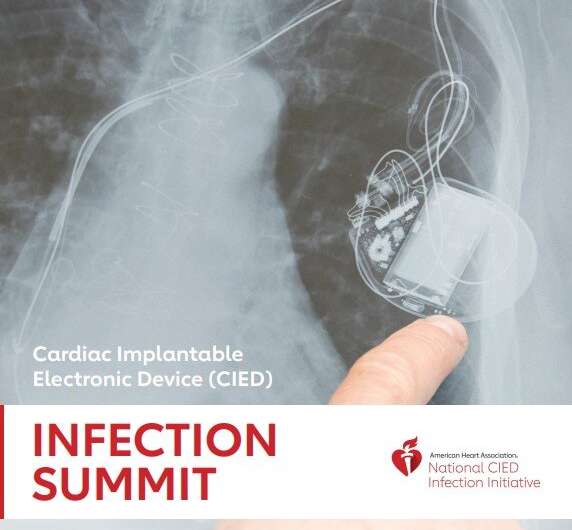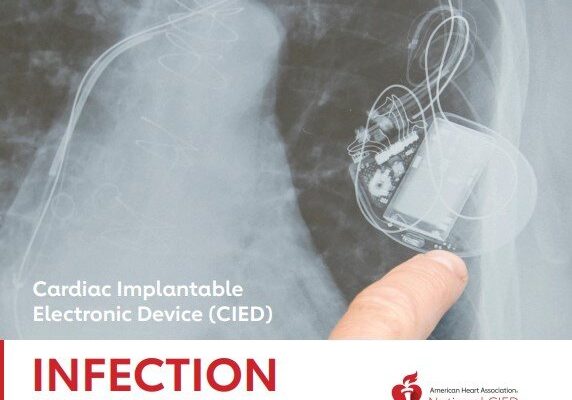
Research finds as many as 1 in 20 patients with a cardiac implantable electronic device (CIED), such as a pacemaker or implantable defibrillator, develops an infection within three years of implantation. However, despite evidence-based guidelines, many patients with a CIED infection do not receive the most up-to-date, evidence-based care. A new report from the American Heart Association’s National CIED Infection Initiative aims to change that.
The report is the result of a summit of key opinion leaders, stakeholders, medical societies, patient groups and other system of care participants convened by the American Heart Association, a global force for healthier lives for all, as part of the larger initiative. The summit, held in March, aimed to identify barriers, opportunities and recommendations to support improved awareness, detection and management of CIED infections.
Although timely removal of the device is the most appropriate treatment option for patients who develop a CIED infection, many do not receive this procedure, according to a past study in the American Heart Association’s journal Circulation: Arrhythmia and Electrophysiology.
“CIED infections, although not frequent, are not rare either, and recent research shows just 1 in 5 patients with a CIED infection has the device fully removed,” said Dr. Bruce Wilkoff, MD, volunteer chair of the American Heart Association CIED Infection Summit planning group and director of cardiac pacing and tachyarrhythmia devices at Cleveland Clinic. “The cost is pain, hospitalization, surgery and, when not recognized and treated appropriately, death. Although effective therapies are available, many of these infections are not detected or treated according to guidelines.”
Insights and data presented at the summit identified a clear problem. The resulting call to action is multilayered and relies on health care professionals evaluating how CIED infection patients are being treated, driving guideline adherence, and communicating existing gaps in care. Patients are called on to advocate for their own health. Stakeholders identified an initial road map to drive change that is outlined in action items organized according to three categories:
- Prevention, Detection and Diagnosis: Identifying the most critical problems across clinical settings, connecting the dots for clinicians, including the role of informatics.
- Improving Treatment and Management of CIED Infection: Recommendations to enhance systems of care.
- Awareness and Education: Examples of consumer and health care professional initiatives in other diseases.
Source: Read Full Article
